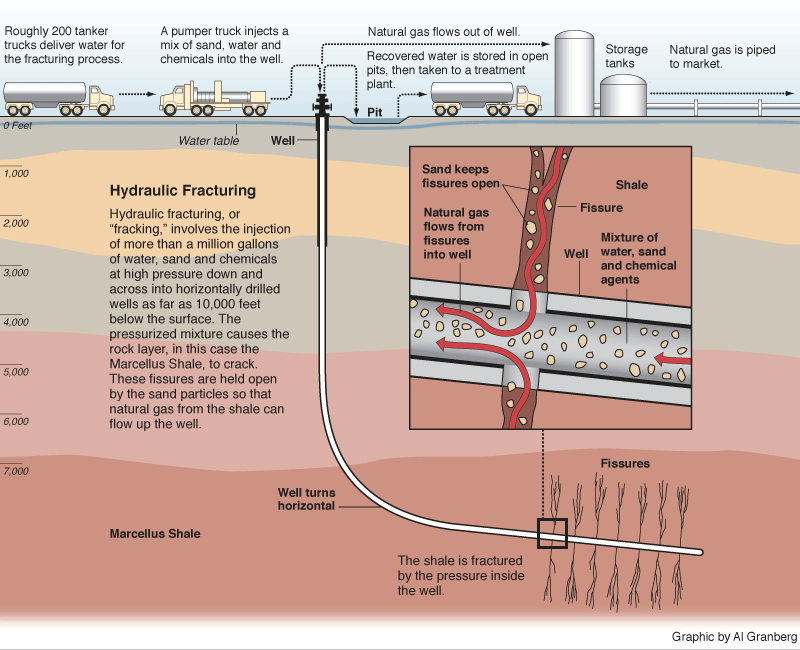When you hear the term Hydraulic Fracturing, or Hydrofracking, most of us shrug our shoulders in unfamiliarity as the topic is one that is unknown to most. Hydraulic fracturing, or hydrofracking, is a technique in which water is mixed with sand and chemicals, and the mixture is injected at high pressure into a drilled hole to create small fractures in attempt to extract natural gases from the earths core. Hydrofracking being a fairly new technique has many problems that most have not taken into consideration or even know about.
The “reason” for hydrofracking is that we can now extract up to 6-8 million more gallons of water than that of the regular drilling process. Unfortunately, how much of this is actually healthy? In the process of hydrofracking a chemically bound substance called “slick water” is used to increase the fluid flow during extraction. Due to the use of slick water there is a highly increased possibility for toxicity and long-term effects as well as environmental effects that affect the water.

Fracking Effluent Pit.
The main concern with hydrofracking is the fact that the drills can hit water sources and contaminate our water due to the use of these drilling chemicals. “Also, gas companies claim the natural gas that is found from hydrofracking is a clean source of energy. This is only partially correct because while natural gas does burn more cleanly, the extraction process of hydrofracking releases a lot of methane (CH4) into the atmosphere and Methane is known to be amongst the leaders in greenhouse gasses. Between hitting water sources and releasing greenhouse gasses, the process of hydraulic fracturing can be and often is harmful to both our environment and health.”

Sources;
“Neighbors of the Onondaga Nation.” What Is Hydrofracking? N.p., n.d. Web. 14 Oct. 2013. <http://www.peacecouncil.net/NOON/hydrofrac/HdryoFrac2.htm>.
“Donate.” Top Stories RSS. N.p., n.d. Web. 14 Oct. 2013. <http://www.propublica.org/special/hydraulic-fracturing-national>.
“EPA.” Hydraulic Fracturing. N.p., n.d. Web. 14 Oct. 2013. <http://www2.epa.gov/hydraulicfracturing>.